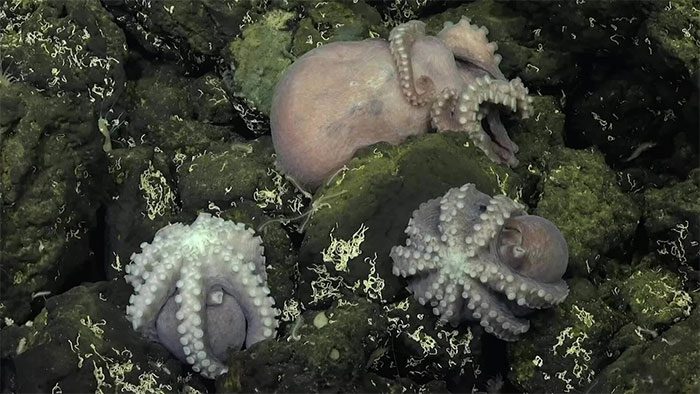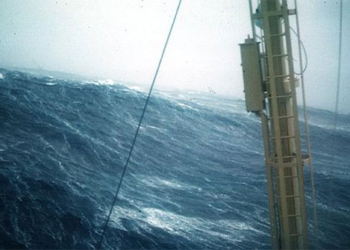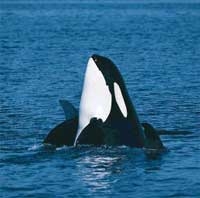Scientists have discovered a site where octopuses gather to lay eggs at a low-temperature hydrothermal vent off the coast of Costa Rica, specifically at the Dorado Seamount.
Octopuses congregate in the deep waters off the coast of Costa Rica. (Video: CNN).
A research team comprising experts from the Schmidt Ocean Institute, the University of Costa Rica, and the Bigelow Laboratory for Ocean Sciences discovered this “nursery” of octopuses using the remotely operated vehicle ROV SuBastian from the Falkor (too) research vessel, as reported by IFL Science on July 1.
The “nursery” at Dorado Seamount was first discovered in 2013 when scientists observed female octopuses congregating to lay eggs. However, during a three-week expedition in June, they witnessed eggs hatching for the first time, indicating that Dorado may support baby octopuses from birth. This also supports the hypothesis that some deep-sea octopus species seek low-temperature hydrothermal vents for egg-laying.
The research team noted that the octopus at Dorado Seamount is likely a new species belonging to the genus Muusoctopus, which includes small to medium-sized octopuses without ink sacs. The team encountered other organisms as well, capturing images of hundreds of animal species, many of which may be entirely new to science.

The octopus at Dorado Seamount is likely a new species belonging to the genus Muusoctopus.
“The discovery of the octopus nursery at a depth of over 2,800 meters beneath the waters of Costa Rica demonstrates that there is still much to learn about the ocean. The deep waters off the coast of Costa Rica exceed human imagination, with stunning footage collected by ROV SuBastian showcasing three-legged fish, baby octopuses, and coral gardens. We hope to continue helping the world observe and study the wonders of the ocean,” shared Dr. Jyotika Virmani, Executive Director of the Schmidt Ocean Institute.
This is just the beginning of the Schmidt Ocean Institute’s mission to explore the world’s oceans. Starting with the 2023 North Atlantic expedition, they plan to undertake missions across all seven continents over the next decade. They hope to map the seafloor, explore unprecedented biodiversity, and assess how the oceans are combating the threats posed by climate change.





















































